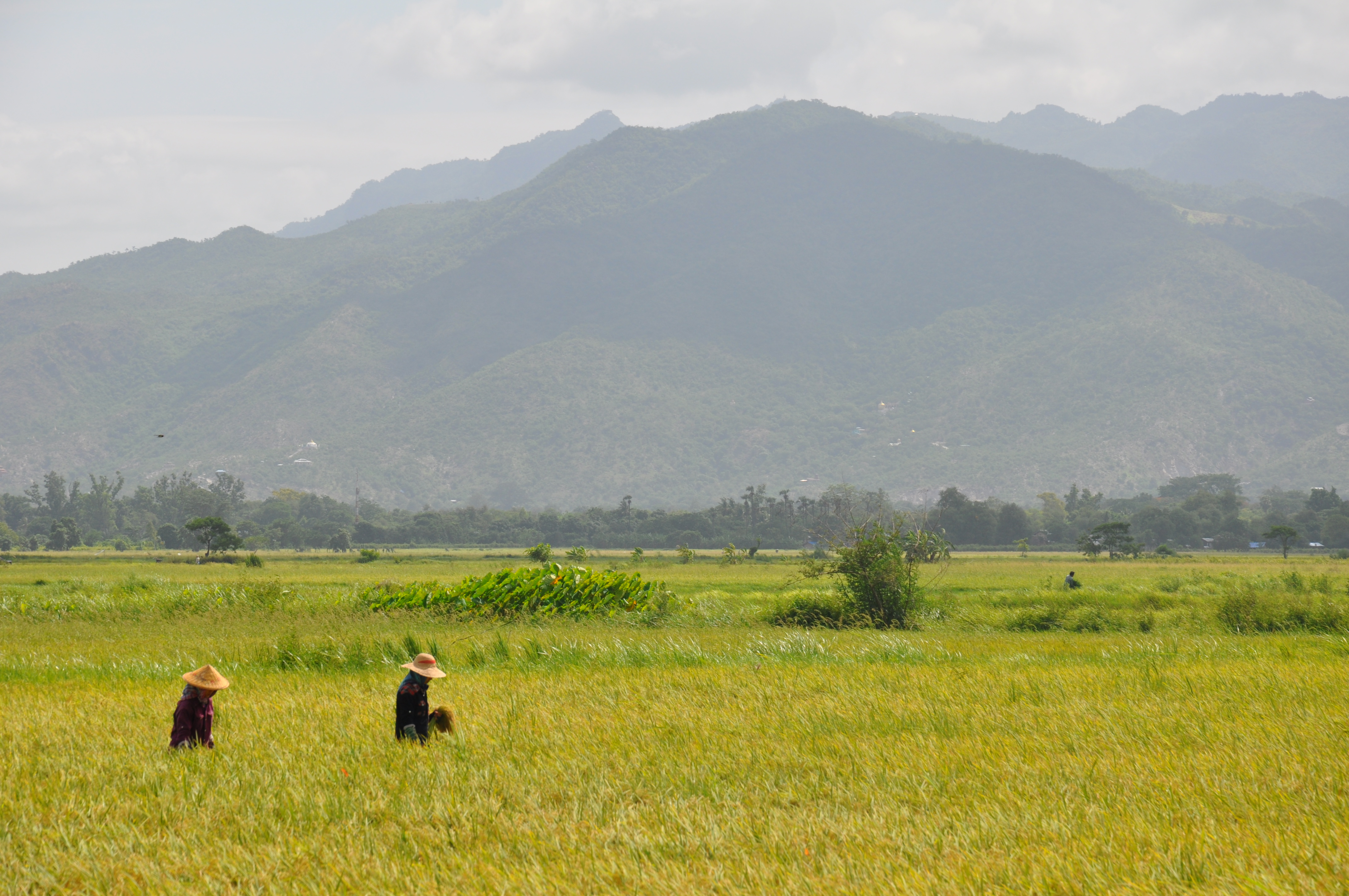Educational Progress
I’ve fallen a little more in love with Myanmar with each passing week. The locals are amused and delighted that I’m embracing their culture. They constantly ask for my opinion of things – Do I like the mango or papaya salad better? Do I think Burmese people are beautiful? Do I prefer Mandalay or Yangon? Do I like watching cane ball games? What do I think about the government? Will I ever come back to Myanmar? Is my “golden” hair the “original” color?
According to the hotel staff, I’ve become somewhat famous in Mandalay as the exotic-looking American who likes to wear traditional Burmese clothes. Having pale skin, blonde hair, and blue eyes is more than enough to make a person stick out here, but the fact that I’ve started wearing longyi (the floor-length skirts worn by virtually all women in Myanmar) with matching tops every day has caused quite a stir. I adopted the local dress out of respect for the conservative sartorial tastes here; even the most modest Western-style clothes are seen as too revealing, particularly for respectable women, so my knee-length dresses (with sleeves!) would be considered far too racy for the classroom. Very few foreigners don traditional clothing, however, so I’m a bit of an oddity walking around town in my Burmese attire. Everywhere I go, people admire the look, beaming huge smiles of approval or shouting from across the street how beautiful it is. Sometimes they even break into song! While riding sidesaddle on the motorbike, as I must do when wearing the longyi, I’ve had many conversations with curious locals who sidle up at an intersection and ask where I’m from, how long I’m staying, and how I like Myanmar.
Also to the joy of the locals, I’ve attempted to take my Burmese language studies beyond the basic “hello” and “thank-you” phrases I learned in the first few weeks. I have a notebook in which I write down the meanings of words next to a phonetic transliteration into English. It’s not an exact science, but it’s the best I can do short of learning to read the complicated Burmese alphabet. Right now I’m tackling mathematics, and am just beginning to recognize the numerical symbols. Because Burmese is a tonal language, however, it’s very difficult for Westerners, and the pronunciation is extremely challenging for me in particular. Even though the locals can’t always understand what I’m trying to say, they’re thrilled that I’m making the effort to speak in the native tongue.
Having an awareness of the philological differences between English and Burmese makes it easier for me to understand the serious challenges my students face as they try to master English. I’m amazed at the progress they’ve made in only a few weeks, although I’m having trouble convincing them of it. With every passing class, however, I’m able to get them to break out of their shells a little more, and now it’s becoming more possible to have discussions about the state of politics and the law in Myanmar. Although some of them are still reluctant to voice their ideas, either because they’re afraid to embarrass themselves by speaking in English or because they’re still worried about openly discussing the government, we’re definitely making progress. On Sunday I had a very interesting conversation with one of my groups about actual and ideal punishments for different types of crimes in Myanmar. Considering that we’ve gone from reviewing the alphabet to discussing constitutional reform in the course of three weeks, I’m extremely pleased with my students’ quick improvement. They only need more confidence and practice.
Interestingly enough, my students at the various monastery schools – who range from age 7 to 44 – are far less inhibited when it comes to speaking English. Perhaps it’s because they’re more accustomed to working in another language, or perhaps they’re less concerned about what their peers think. The children, in particular, are incredibly excited to speak to a native speaker; many of them come from small villages and have never seen a foreigner before, let alone spoken to one. The same is true of many of the older students, although some, particularly those from cities, have had modest exposure to international travelers. Some of the monks informed me that they frequently go to tourist sites around town, hoping to run into a foreigner who’s willing to converse with them. All of the students seem to share the conviction that learning English will help them create contact with the outside world, learn about other countries and cultures, and, through their own self-improvement, make Myanmar a better place. It’s a kind of motivation I’ve never seen in American classrooms.
Teaching in Mandalay has given me a rare opportunity to take a glimpse inside the educational system of Myanmar, which seems to remain a mystery for those outside the schools and universities. I learned to my great dismay that, until very recently, parents had to pay for their children’s grade school education; as a result, many poor families, especially those in the countryside, stopped sending their children to school after grade 5 or 6. The textbooks are woefully out-of-date. University professors are appointed by the government, not chosen by the universities themselves. Although changes are being made, they’re slow in coming, and attempts at educational reforms haven’t been as successful as activists would like. People are hopeful but very cautious with their optimism, and some believe that the progress made in the past several years has come to a halt (and is perhaps even regressing). It will be interesting to see what changes, if any, will follow the elections in November.
